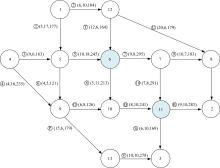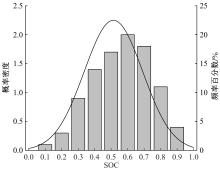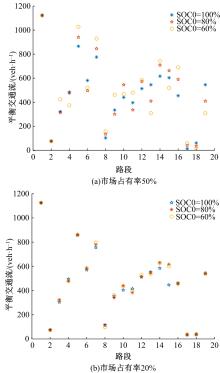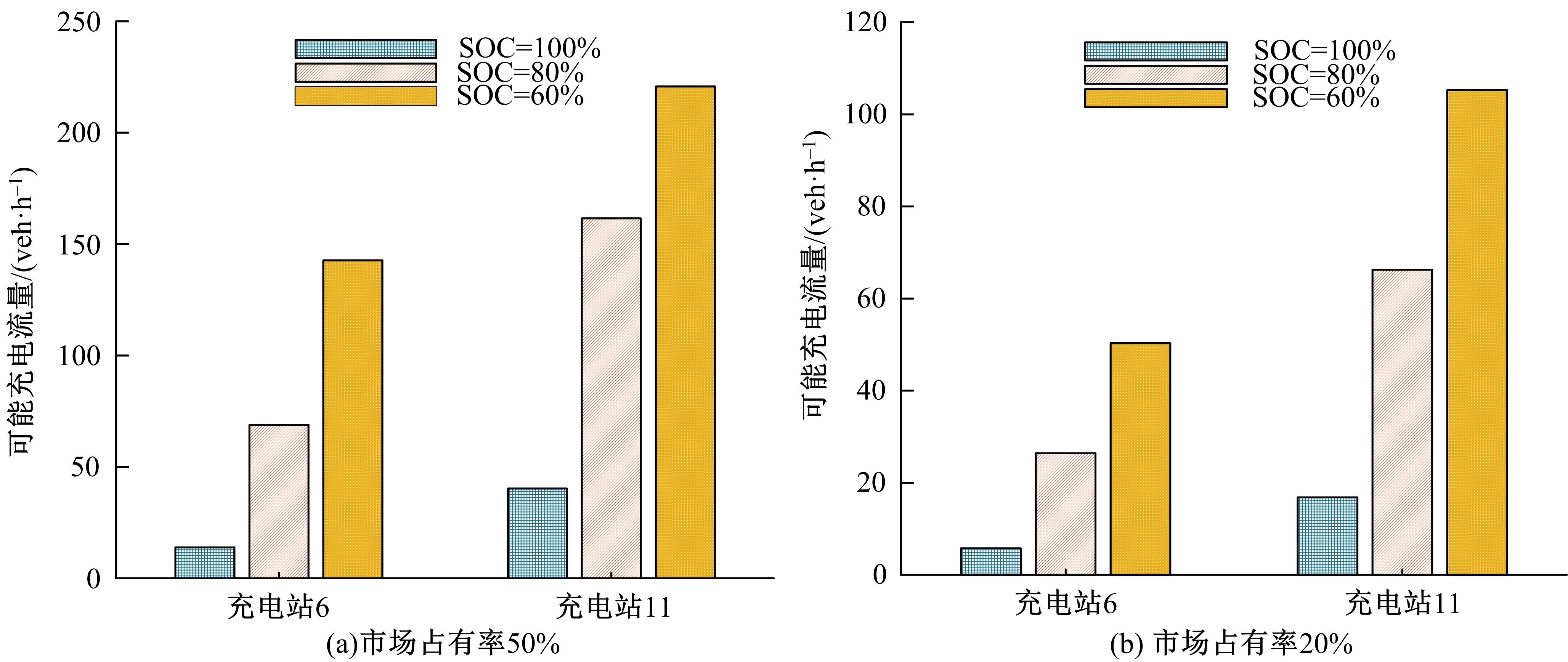Journal of Jilin University(Engineering and Technology Edition) ›› 2022, Vol. 52 ›› Issue (1): 136-143.doi: 10.13229/j.cnki.jdxbgxb20200785
Mixed network equilibrium model with stochastic charging demand
Yun-juan YAN1( ),Wei-xiong ZHA2(
),Wei-xiong ZHA2( ),Jun-gang SHI2,Jian LI2
),Jun-gang SHI2,Jian LI2
- 1.College of Mechatronics & Vehicle Engineering,East China Jiaotong University,Nanchang 330013,China
2.Institute of Transportation and Economics,East China Jiaotong University,Nanchang 330013,China
CLC Number:
- U491
| 1 | Windecker A, Ruder A. Fuel economy, cost, and greenhouse gas results for alternative fuel vehicles in 2011[J]. Transport Research Part D: Transport and Environment, 2013, 23: 34⁃40. |
| 2 | Beckmann M J, Mcguire C B, Winston C B. Studies in economics of transportation[J]. Operational Research Society, 1956, 7(4):146-147. |
| 3 | Wardrop J G. Some theoretical aspects of road traffic research[J]. OR, 1953, 4(4):72⁃73. |
| 4 | Jonathan D, Pitu A B, Mirchandani H. The electric vehicle shortest-walk Problem with battery exchanges[J]. Networks and Spatial Economics March, 2016, 16(1):155⁃173. |
| 5 | Schneider M, Stenger A, Goeke D. The electric vehicle-routing problem with time windows and recharging stations[J]. Transportation Science, 2014,48(4):500⁃520. |
| 6 | Jiang N, Xie C. Computing and analyzing mixed equilibrium network flows with gasoline and electric vehicles[J]. Computer-Aided Civil and Infrastructure Engineering, 2014, 29(8): 626-646. |
| 7 | Xie C, Jiang N. Relay requirement and traffic assignment of electric vehicles[J]. Computer-Aided Civil and Infrastructure Engineering, 2016, 31(8): 580-598. |
| 8 | He F, Wu D, Yin Y F, et al. Optimal deployment of public charging stations for plug-inhybrid electric vehicles[J]. Transportation Research Part B: Methodological, 2013, 47(C):87-101. |
| 9 | Cen X K, Hong K L, Li L, et al. Modeling electric vehicles adoption for urban commute trips[J]. Transportation Research Part B,2018,117(A): 431⁃454. |
| 10 | Mock P, Schmid S A, Friedruch H E. Chapter twenty one: market prospects of electric passenger vehicles[M]//Electric & Hybrid Vehicles, Berlin: Elsevier,2010:545-577. |
| 11 | Smart J, Stephen S. Battery electric vehicle driving and charging behavior observed early in the EV project [J]. SAE International Journal of Alternative Powertrains, 2012, 1(1): 27-33. |
| 12 | Nguyens Dupuis C. An efficient method for computing traffic equilibria in networks with asymmetric transportation costs[J]. Transportation Science, 1984, 18(2):185⁃202. |
| 13 | 陶顺, 肖湘宁, 温剑锋.电动汽车分散充电设施配比度分析与计算方法[J]. 电工技术学报, 2014, 29(8):11-19. |
| Tao Shun, Xiao Xiang-ning, Wen Jian-feng. Analysis and calculation method of matching ratio of electric vehicle decentralized charging facilities [J]. Transactions of China Electrotechnical Society, 2014, 29(8): 11-19. |
| [1] | Hao LI,Hao CHEN. Mixed traffic network equilibrium with battery electric vehicles considering charging queuing time [J]. Journal of Jilin University(Engineering and Technology Edition), 2021, 51(5): 1684-1691. |
| [2] | Zuo-an HU,Yi-ming XIA,Jia CAI,Feng XUE. Optimization of urban rail transit operation adjustment based on multiple strategies under delay [J]. Journal of Jilin University(Engineering and Technology Edition), 2021, 51(5): 1664-1672. |
| [3] | Cai-hua ZHU,Xiao-li SUN,Yan LI. Forecast of urban public bicycle traffic demand by station classification [J]. Journal of Jilin University(Engineering and Technology Edition), 2021, 51(2): 531-540. |
| [4] | Qing-yu LUO,Wan-li TIAN,Hong-fei JIA. Location and capacity model of electric vehicle charging station considering commuting demand [J]. Journal of Jilin University(Engineering and Technology Edition), 2019, 49(5): 1471-1477. |
| [5] | CAO Qian, LI Jun, LIU Yu, QU Da-wei. Construction of driving cycle based on Markov chain for passenger car in Changchun City [J]. Journal of Jilin University(Engineering and Technology Edition), 2018, 48(5): 1366-1373. |
| [6] | SUN Bao-feng, GAO Kun, SHEN Xiu-xiu, LIANG Ting. Location model of gas station for network expansion based on capacity balance and variable coverage radius [J]. 吉林大学学报(工学版), 2018, 48(3): 704-711. |
| [7] | XU Liang,CHENG Guo-zhu. Setting minimum vehicle speed limit on freeway based on speed scattering and economic speed [J]. 吉林大学学报(工学版), 2010, 40(03): 661-0665. |
|
||







